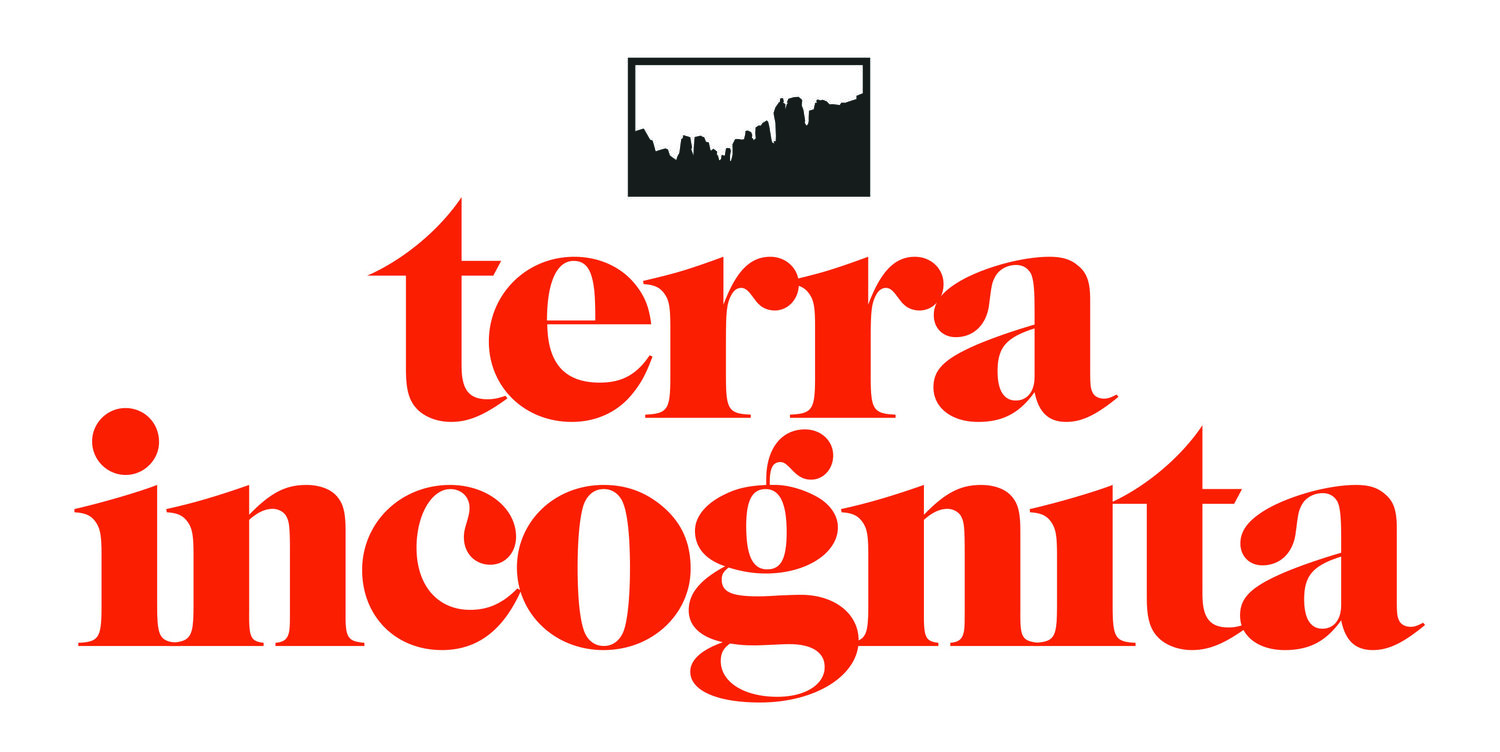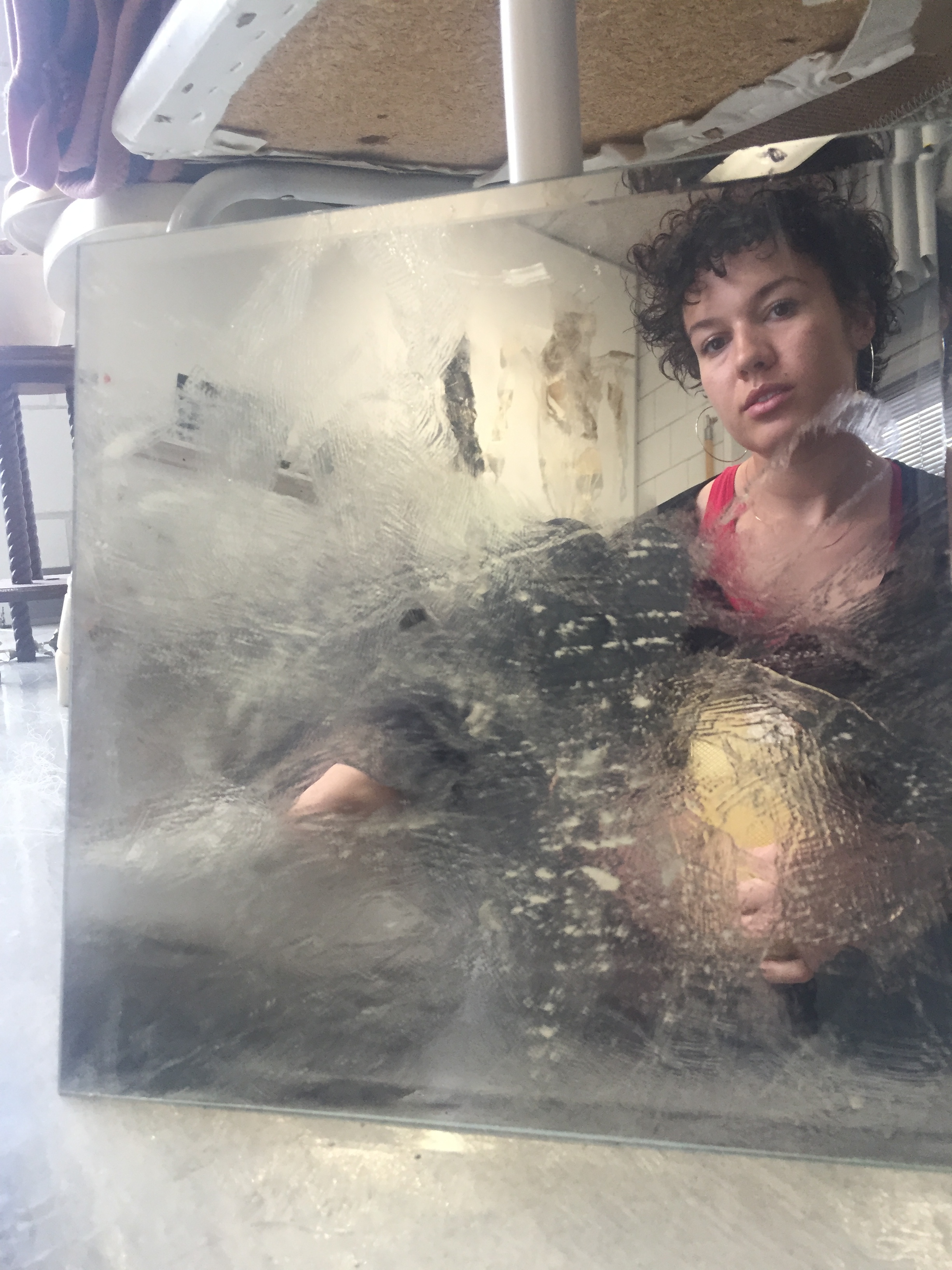Wakanda Forever: Anticolonialism as Sustainable Technology
Alyssa Denay Carter
Alyssa is our contributing artist who created the cover art above specifically for this essay. Carter is a (soon-to-be) graduate from Colorado College obtaining a degree in Studio Art with an emphasis on textiles, performance, and printmaking/painting, along with a minor in Race and Ethnic Migrations Studies. Her work addresses the embodiment and performance of intersectional identities, bodies in spaces, and places in bodies, a sort of inherited cultural memory, and both literal and metaphorical processes of shedding skin using weaving sculptural textiles out of nylon monofilament, as well as using layering and collage techniques.
Instagram @southerbaptistmulattaslut
Black Panther, like many of the Marvel comics and movies, has rooted its premise and power in reality, and its characters are contextualized by humanness and historicity. Marvel movies make their world seem nearly identical to our own, thus using their storylines as entry points for social, cultural, and historical representation and discourse-- Black Panther is no different. For many, Black Panther is a pop culture allegory for the black experience, covering themes of colonialism, ancestry, family, and diaspora.
An important aspect within Black Panther’s allegory that seems to be overlooked by mainstream media coverage is the relationship between Black people and the natural world. Indeed Wakanda relies on Vibranium to reach marvelous societal heights, but as we’ve seen historically the mere presence of powerful resources does not inherently make a nation mighty, successful, or good. Wakanda is prolific because they render Vibranium through an anti-colonial mindset that allows them to have a nourishing relationship with the land. They use anti-colonialism as technology to develop an entirely sustainable, self-sufficient society rich with urbanity and natural space.
This film is telling us something crucial about urbanity, sustainability, and nature; anti-colonialism is central in reimagining who engages with our environmental future and how we should do it. How can anti-colonialism be a form of technology? The definition of technology is “the branch of knowledge that deals with the creation and use of technical means and their interrelation with life, society, and the environment,” and “the application of this knowledge for practical ends.” In short, technology is the application of scientific knowledge to social and environmental factors. Anti-colonialism can be used as technology because it simply informs the way scientific knowledge is applied.
In Black Panther, anti-colonialism is sustainable technology, because it informs the way they use natural resources to maintain a self-sufficient economic, social, and environmental system despite existing in a globalized economy.
The film makes this strikingly clear through four important characters. First, through the incredibly vibrant characterization of Princess Shuri, whose intelligence fuels their empire. Of course she’s known for her quotable lines like, “Don’t scare me like that colonizer!” and, “Ugh, yet another broken white boy for me to fix.” But let’s dive into the scene right after she heals Agent Ross, and he wakes up from a spinal cord injury only to find that he’s in a foreign tech den with an Electronica high hat bumping in the background.
“How am I healed overnight? What is this magic?” says Agent Ross.
Shuri scoffs in response, “No it’s not magic. It’s technology.”
Shuri makes it very clear that Wakandans are not mystical negroes with a magic plant.
It is only through Wakandan application of Vibranium that they can achieve greatness. Her character reveals how beautiful the intersection of anti-colonialism and technology can be as we see her not only create superhero gadgets, but also public transport systems, medical remedies, and universal communication devices that catalyze urban growth. What’s more, is that her use of technology has not put Wakanda at odds with nature. While we do see imagery of high powered urban centers the film is also abundant with scenes of rolling hills, jagged mountains, and sacred plants.
Even when the movie acknowledges tension between modern (Shuri) and traditional (M’Baku) forces, that conflict resolves when we find out that M’Baku rescued King T’Challa after everyone assumed he was dead. While Shuri’s modern medical remedies are important, M’Baku demonstrates that Wakanda also thrives upon tradition as he keeps T’Challa’s health intact by preserving his body in snow. Through Shuri and M’Baku, the film reimagines how Black people engage with the environment through traditional and modern technology.
Mid-way through the film, the camera pans to a dramatic wide shot of Erik Killmonger’s rippling back framed by a billowing field of flames while the score mirrors the scene’s intensity with deep percussion. He just eviscerated Wakanda’s sacred Vibranium herb garden. This is a significant turning point in the film when we receive a glimpse of how colonialism can cause environmental devastation. Erik Killmonger is an American characterized by his nuanced sense of anger. Unlike Wakanda, American urbanity is a matrix for the systematic replication and amplification of racism, capitalism,, and neocolonialism. Rightfully so, Killmonger is enraged by his experience of urbanity because as he says, “they’ve flooded the streets with guns and drugs.” In his context, the urban landscape is an agent for conquest. Colonialism is the foundation of his relationship with his environment, and as a result his connection to the land is polluted. It is clear that not only his people, but also his spirit has been colonized, thus making him selfish and violent. Unfortunately, he chooses to perpetuate the colonial mindset he has inherited by rendering Vibranium as weaponry.
Nakia yearns for justice just as Killmonger does, but in contrast, seeks to do it without adopting colonial ways. Nakia’s sentiments align in many ways with Audre Lorde’s famous quote:
“For the master’s tools will never dismantle the master’s house. They may allow us temporarily to beat him at his own game, but they will never enable us to bring about genuine change. And this fact is only threatening to those women who still define the master’s house as their only source of support.”
Killmonger seeks to use the master’s colonial tools to dismantle injustice, while Wakandans like Nakia seek to bring an entirely separate mode of anti-colonial development to the rest of the world.
I recognize the problems with Killmonger as a character and the presumption that Wakanda is utopic in any way. Why does Killmonger’s rage have to be villainized, when it’s justified? Why is a nation untouched by whiteness and colonialism still patriarchal and gender conforming?
Are there no fat, disabled, and queer folks in Wakanda? How can a film be adequately anti-colonial when it is owned by Disney, and has the largest capitalist footprint of all the Marvel movies?
As a queer African American myself, these are questions I certainly asked, but the film, like all art and media, can be used as a discursive tool to help us collectively reimagine the power of Blackness, especially when we center anti-colonialism. This means not only opposing colonial forces, but also relinquishing colonial systems, structures, and forms of engaging with the world. But what does it mean to actually center anti-colonialism in environmentalism?
Anti-colonialism when applied to sustainable technology, development, and the environment means that we eliminate the Western world as the only ideal for "progress" and "development." It means that we consider the global colonial impacts of outsourcing biofuel farming to southeast Asian countries so that Americans can maintain their glutinous lifestyles. It means that water filtration technology isn’t a privilege, it’s a right. It means that public transportation isn’t only abundant, quick, and clean in rich white neighborhoods. It means that sustainable technology can be modern, but it can also be traditional and culturally wise. On a globe that has been invariably altered by colonialism, Black Panther is giving us blueprints for sustainably rebuilding our physical, emotional, natural, and societal systems with anti-colonialism as the technological force.




